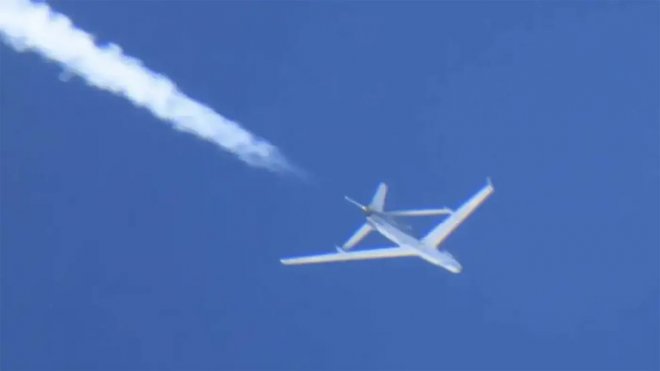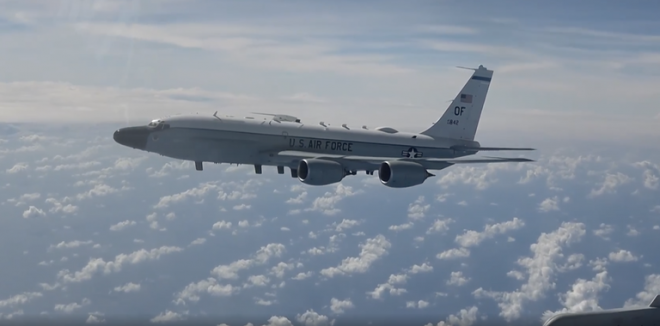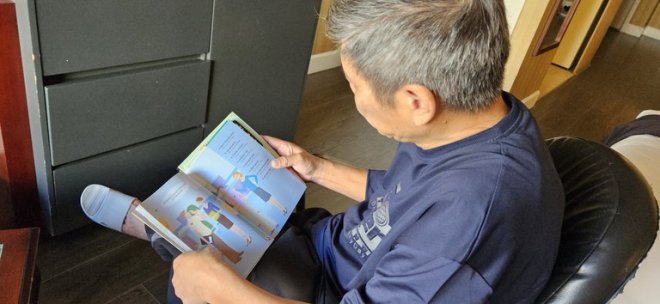Chinese aircraft carrier leaves West Pacific after drills near Guam
The Chinese aircraft carrier Liaoning and its strike group have left the West Pacific after the far-sea drills that saw it make a rare approach to the U.S. island territory of Guam.The Japanese Ministry of Defense’s Joint Staff Office said in a statement Monday that the Liaoning strike group was spotted sailing through the Miyako Strait northward into the East China Sea on Sunday.
From Wednesday to Saturday, the Chinese carrier-based aircraft conducted some 60 take-offs and landings, the statement said. That means during the whole period Dec. 17 to Dec. 31, Chinese fighters and helicopters carried out about 320 take-offs and landings.
Japan scrambled military aircraft and vessels to monitor the strike group’s movements, the Joint Staff Office said.
The Liaoning and its escorting vessels began their latest deployment in mid-December, when Japan announced its new security strategy that named China an unprecedented “strategic challenge.”
On Dec. 25 the aircraft carrier was spotted 670 kilometers (416 miles) southeast of Okinotorishima, about 618 kilometers (384 miles) northwest of Guam – a rare approach that a Chinese Communist Party newspaper interpreted as a warning to the U.S. over Taiwan.
Guam is home to two key U.S. military bases hosting strategic bombers and submarines.
By approaching Guam, the People’s Liberation Army (PLA) has extended its reach well beyond the so-called First Island Chain onto the Second Island Chain.
The First Island Chain is a chain of main archipelagos surrounding the East Asian continental mainland, including Japan and Taiwan.
“It appears to be part of China"s rehearsal for a Taiwan contingency, when Beijing needs to cut off the supply lines to Taiwan from the east,” said Alexander Vuving, a professor at the Asia-Pacific Center for Security Studies, a U.S. Department of Defense institute based in Hawaii.
“It served as a deterrent, however whether it can deter the U.S. is another question,” Vuving said.
The analyst told RFA that the Liaoning’s operation was “just a logical step after China has built its own aircraft carriers and consistent with China"s ambition of becoming a major maritime power.”
“I would expect China to deploy its aircraft carriers to farther waters, the Indian Ocean for example,” he added.
 A Chinese WZ-7 UAV spotted in areas around Japan. CREDIT: Japan Ministry of Defense
A Chinese WZ-7 UAV spotted in areas around Japan. CREDIT: Japan Ministry of Defense‘Soaring Dragon’
The Japanese Ministry of Defense’s Joint Staff Office also said that for two days in a row, on Sunday and Monday, China flew an unmanned aerial vehicle (UAV) WZ-7 through the Miyako Strait into areas around Japan.
The WZ-7 -- dubbed ‘Soaring Dragon’ -- is a high-altitude long endurance UAV and one of the most advanced drones China has developed. Japan scrambled fighter jets in response.
The WZ-7, used mostly for intelligence, surveillance, and reconnaissance (ISR), has been spotted around Taiwan but this was the first time Japan reported sighting the UAV.
 A U.S. RC-135 aircraft seen in the PLA-released video. CREDIT: PLA Southern Theater Command
A U.S. RC-135 aircraft seen in the PLA-released video. CREDIT: PLA Southern Theater CommandIn another development, the Chinese military said a U.S. spy plane “engaged in dangerous maneuvers against a PLA Navy fighter jet,” responding to an accusation by the U.S. Indo-Pacific Command (INDOPACOM).
INDOPACOM said that on Dec. 21 a Chinese J-11 fighter pilot performed an unsafe maneuver during an intercept of a U.S. Air Force RC-135 aircraft, forcing the RC-135 to “take evasive maneuvers to avoid a collision.”
On Saturday, the PLA Southern Theater Command released its own version, supported by a video, saying “the U.S. intentionally misled the public.”
The command’s spokesperson, Senior Col. Tian Junli, said that “the U.S. military"s statement ignores facts and is nothing but slander and speculation.”
Tian said that the U.S. RC-135 aircraft “conducted intentional close-in reconnaissance in the vicinity of China"s southern coastline and the Xisha (Paracel) Islands” in the South China Sea.
“During the process, in disregard of repeated warnings from the Chinese pilot, the U.S. aircraft abruptly changed its flight attitude and forced the Chinese aircraft to the left,” the spokesman said.
The U.S. military has yet to respond to the Chinese accusation.
[圖擷取自網路,如有疑問請私訊]
|
本篇 |
不想錯過? 請追蹤FB專頁! |
| 喜歡這篇嗎?快分享吧! |
相關文章
AsianNewsCast






















